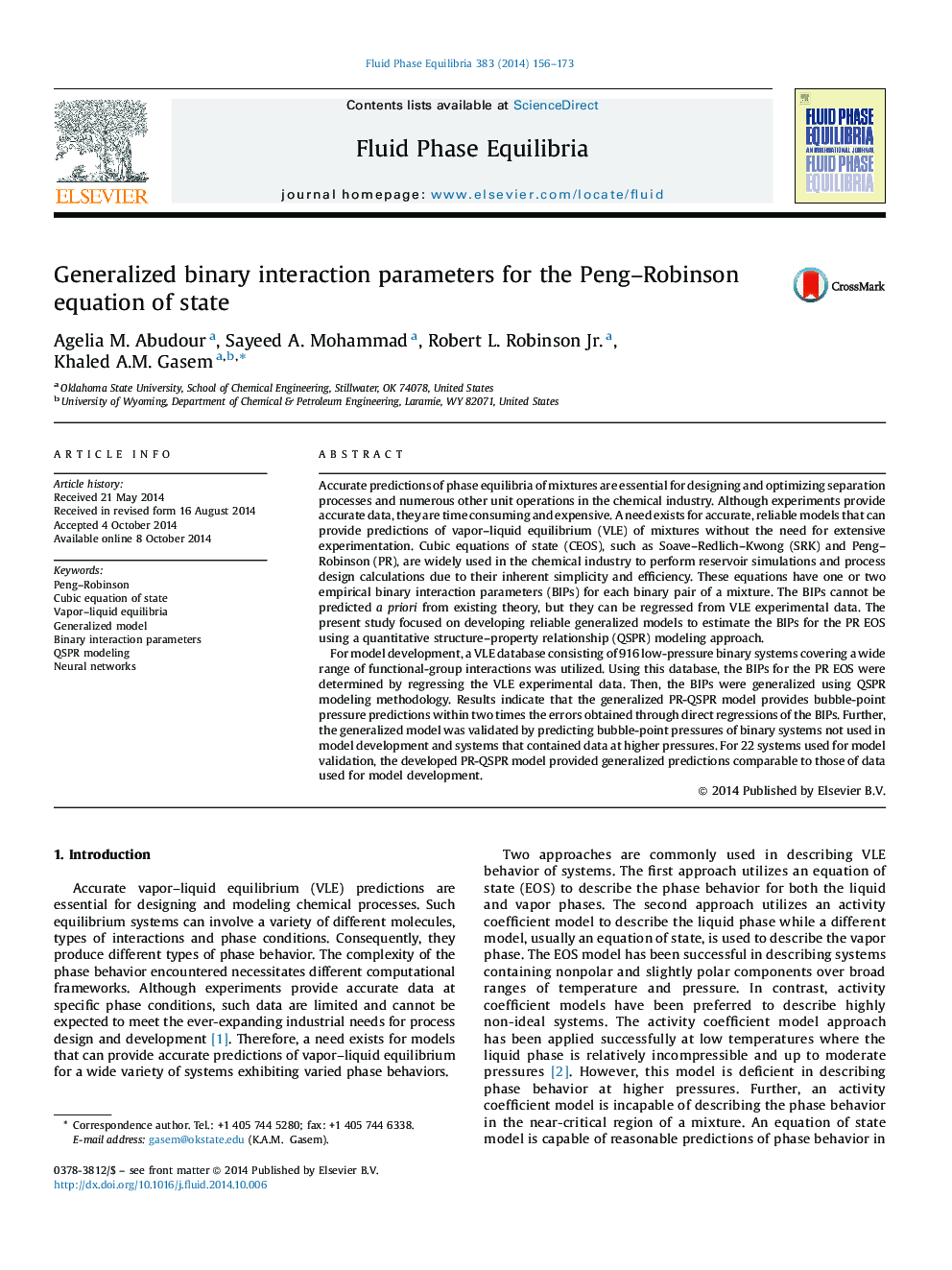| کد مقاله | کد نشریه | سال انتشار | مقاله انگلیسی | نسخه تمام متن |
|---|---|---|---|---|
| 201890 | 460575 | 2014 | 18 صفحه PDF | دانلود رایگان |
• Generalized models developed for PR EOS binary interaction parameters.
• Generalized model tested on a large database of binary VLE data.
• Bubble-point pressure predictions were within two times the direct regressions.
• New model validated with external dataset that included high-pressure systems.
Accurate predictions of phase equilibria of mixtures are essential for designing and optimizing separation processes and numerous other unit operations in the chemical industry. Although experiments provide accurate data, they are time consuming and expensive. A need exists for accurate, reliable models that can provide predictions of vapor–liquid equilibrium (VLE) of mixtures without the need for extensive experimentation. Cubic equations of state (CEOS), such as Soave–Redlich–Kwong (SRK) and Peng–Robinson (PR), are widely used in the chemical industry to perform reservoir simulations and process design calculations due to their inherent simplicity and efficiency. These equations have one or two empirical binary interaction parameters (BIPs) for each binary pair of a mixture. The BIPs cannot be predicted a priori from existing theory, but they can be regressed from VLE experimental data. The present study focused on developing reliable generalized models to estimate the BIPs for the PR EOS using a quantitative structure–property relationship (QSPR) modeling approach.For model development, a VLE database consisting of 916 low-pressure binary systems covering a wide range of functional-group interactions was utilized. Using this database, the BIPs for the PR EOS were determined by regressing the VLE experimental data. Then, the BIPs were generalized using QSPR modeling methodology. Results indicate that the generalized PR-QSPR model provides bubble-point pressure predictions within two times the errors obtained through direct regressions of the BIPs. Further, the generalized model was validated by predicting bubble-point pressures of binary systems not used in model development and systems that contained data at higher pressures. For 22 systems used for model validation, the developed PR-QSPR model provided generalized predictions comparable to those of data used for model development.
Journal: Fluid Phase Equilibria - Volume 383, 15 December 2014, Pages 156–173
